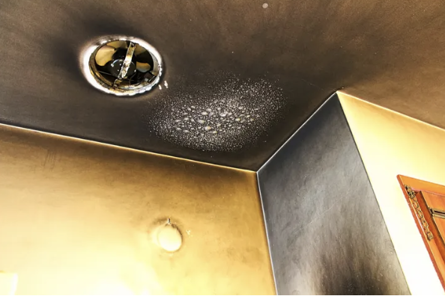Fires are devastating, even small house fires, and they often leave behind smoke smell, soot, water damage, and even chemical residue from extinguishing them. Smoke residue can pose risks to your health, not to mention leaving an unpleasant odor, so it’s important to remove it as soon as possible. After a small fire, you can try removing smoke yourself, but it’s still a lot of work. ServiceMaster of Baltimore always recommends you call us for professional smoke damage remediation after a fire, but we also want you to know how to get rid of it yourself.
What is Smoke and Soot?
Smoke is a mixture of the particles and chemicals that are produced from burning carbon-containing materials like wood, home structures, and brush. All smoke contains carbon monoxide, carbon dioxide and soot. Smoke can contain many different chemicals, including aldehydes, acid gases, sulfur dioxide, nitrogen oxides, polycyclic aromatic hydrocarbons (PAHs), benzene, toluene, styrene, metals and dioxins.
Smoke particles stick to everything in your home, from upholstery and linens to the paint on the walls. It can also affect your home’s HVAC system and negatively impact the air quality in your home.
Why is Smoke Dangerous?
Because of all of the chemicals contained in smoke and soot, it can irritate the lungs and put you at increased risk of cardiovascular disease over time. Immediate exposure to smoke causes eye and lung irritation, and the carbon monoxide present can quickly kill. Long-term exposure to the particles and irritants in soot left in the home after a fire can permanently damage the lungs and heart.
How to Get Rid of Smoke After A Small Fire
In general, it’s best to call the professionals after any type of fire, but we understand that after a small house fire you might want to try DIY smoke removal yourself first. Here are the general key steps to follow to remove smoke after a house fire:
- Air out the whole home: Even if the fire only occurred in the kitchen, you’ll need to air out the entire property. Smoke travels fast and sticks to everything, so you’ll want to immediately open all windows and run exhaust fans to get air circulating. You may need to actually use positive pressure to pull air out with a large fan if the smoke is thick.
- Do a deep clean: Remove all linens, rugs, curtains, pillows, and all other removable fabric items and wash them. It’s a good idea to have them washed outside of the home to avoid them soaking up the smoke smell again. You’ll also want to wash windows, screens, and surfaces from top to bottom to remove all traces of smoke and soot particles. Don’t forget about deep cleaning carpets, as they can hold on to a lot of dirt and debris.
- Check your HVAC: Change the HVAC filter after a fire. You will probably notice a dark gray or even black appearance to it due to the smoke circulating in the air. Clean vents and make sure airflow is maintained throughout the home.
- Repaint if necessary: In some cases, homeowners have found that the paint on their walls is holding on to a lot of smoke particles and cannot remove the smell even after cleaning. In this case, you’ll need to repaint the walls to remove the smell of smoke after a house fire.
ServiceMaster of Baltimore Smoke Damage Cleanup
House fires can feel overwhelming to deal with, but ServiceMaster of Baltimore has over 60 years of experience helping homeowners deal with fire and smoke damage remediation. Please call us at (410) 498-8030 for an estimate and professional, quick response.


